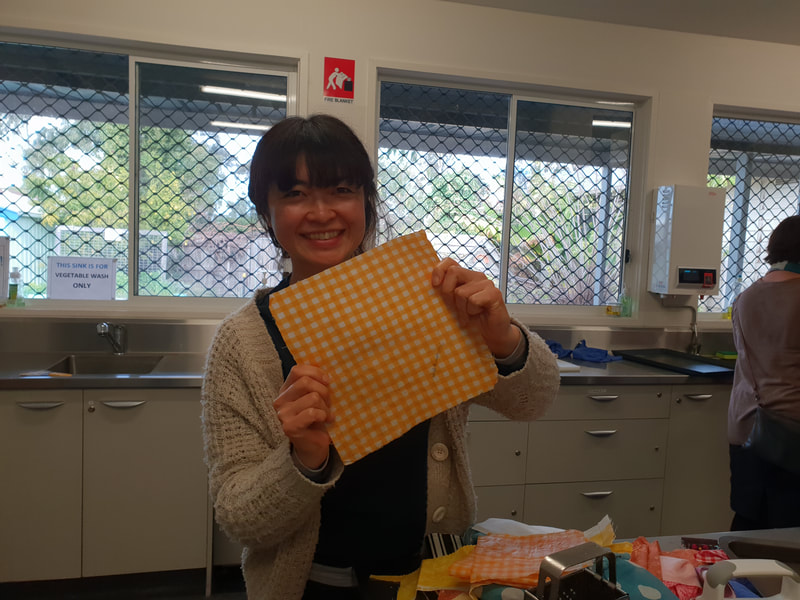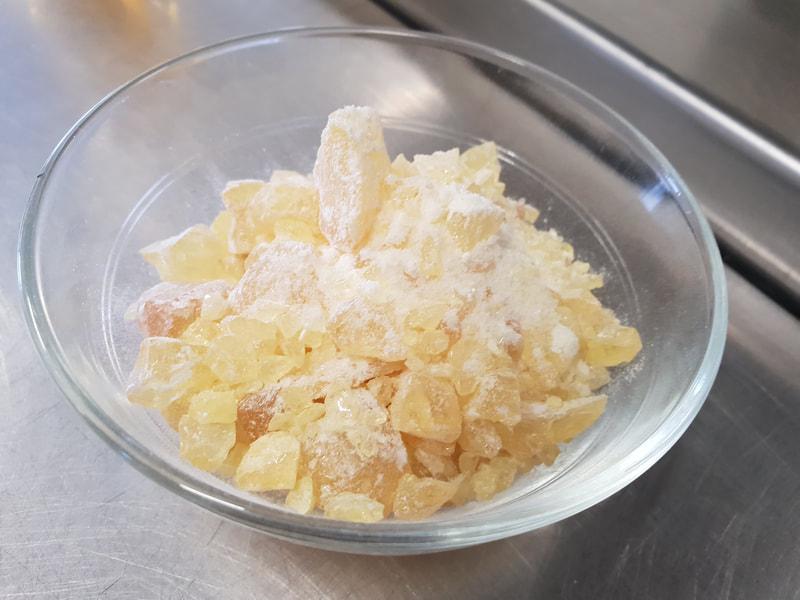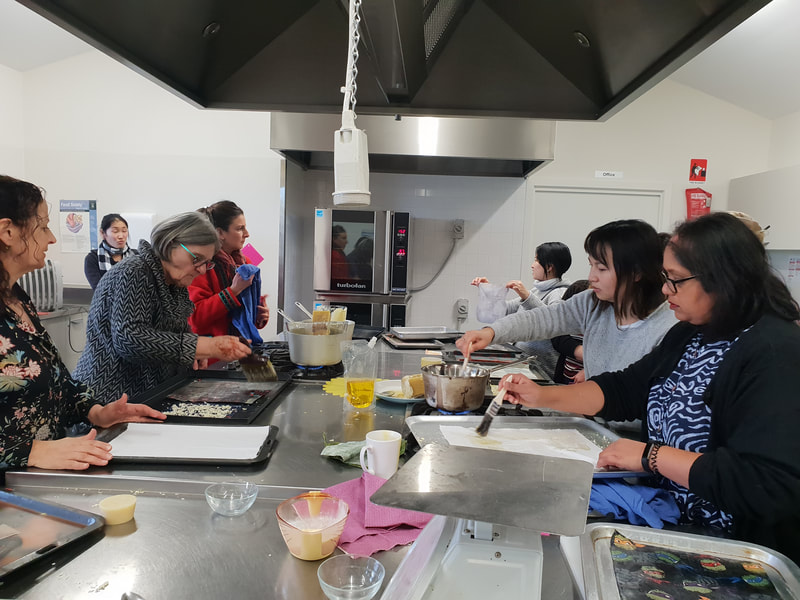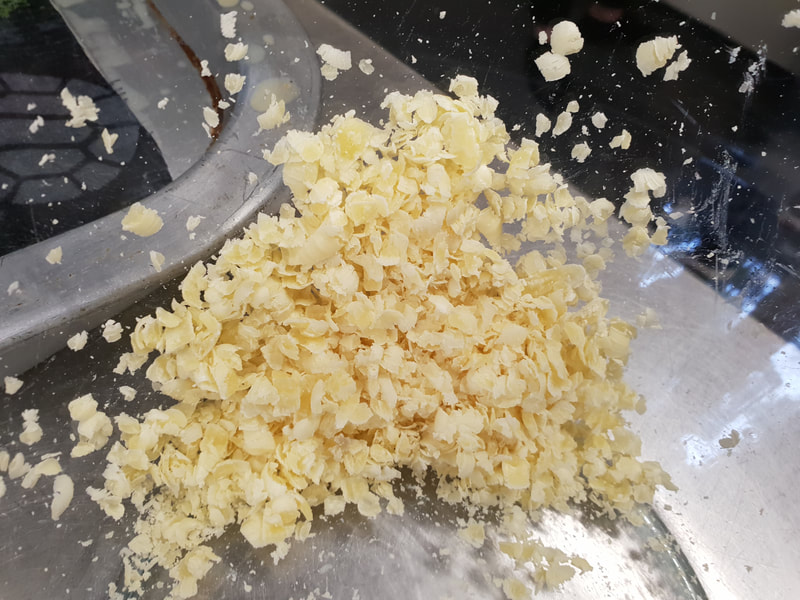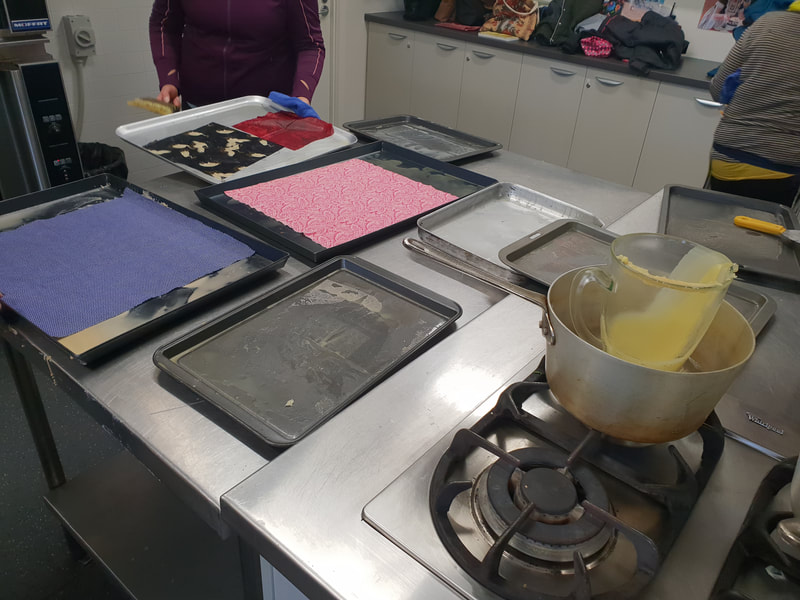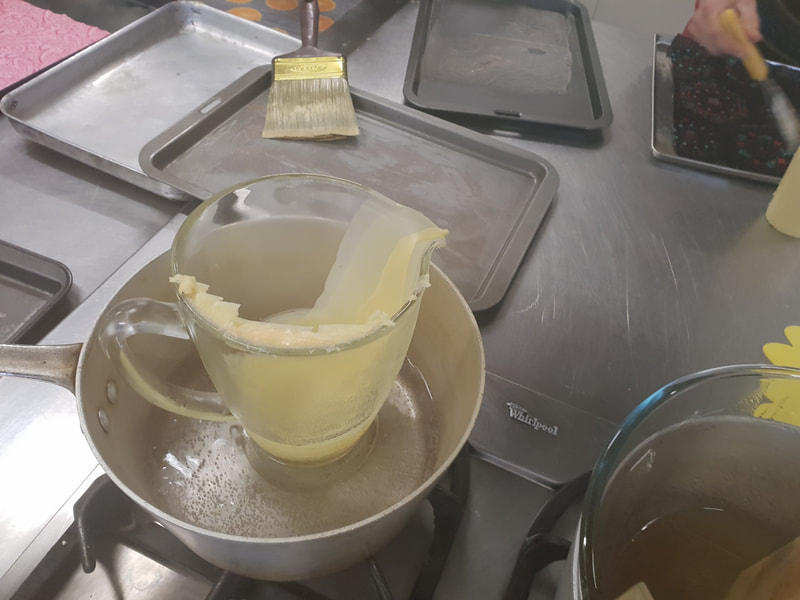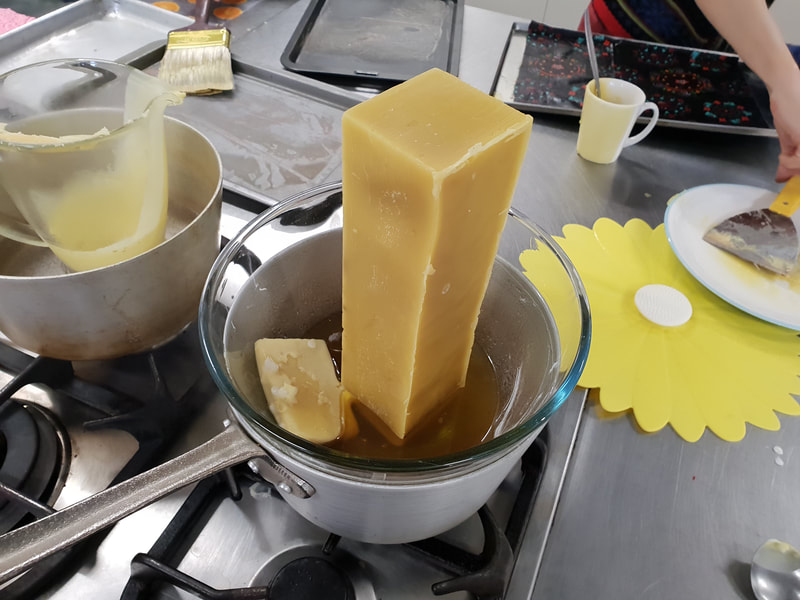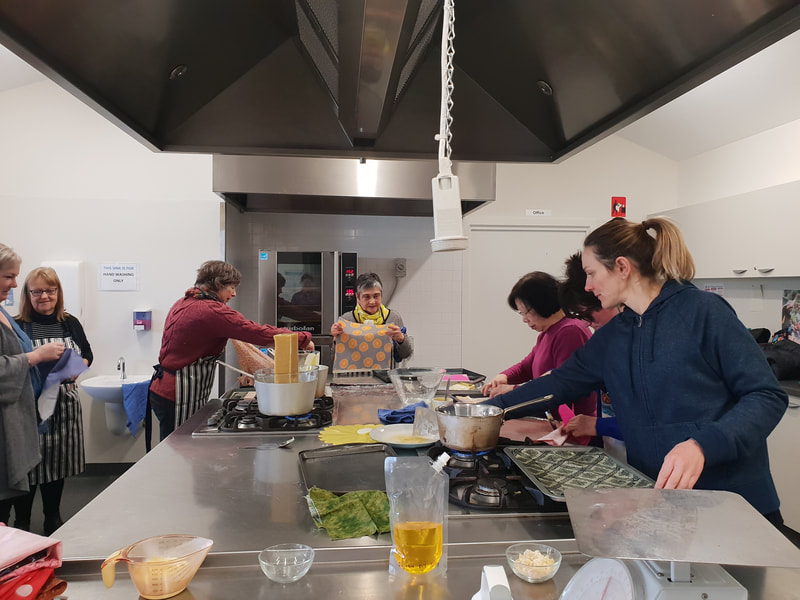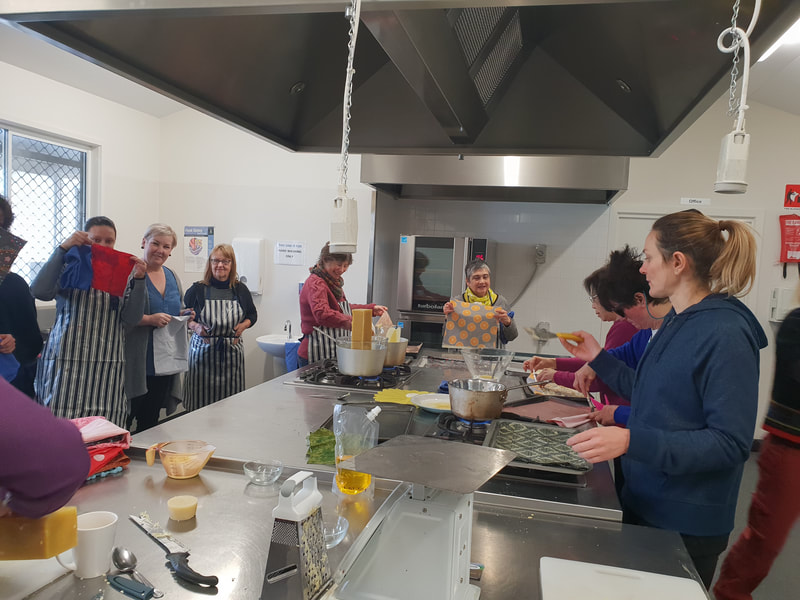Beeswax and vegan wax wraps
Below are tips and advice coming out of our workshop at Maidstone Community Centre.
DIY beeswax wraps
|
We used three different mixes:
a) grated beeswax melted directly on to the fabric b) beeswax and jojoba oil melted in a double boiler c) recipe below melted in a double boiler To make one extra large or three medium wraps, we used 85 grams of our wax blend. Our premium blend was made up of:
Pre-wash your fabric squares to remove any coatings and excess dyes - we learnt this the hard way with one of our fabrics! We used cotton of varying thicknesses. You could try linen and hemp. I use old sheets at home. Equipment For small scale projects, I use an iron and greaseproof paper. For the workshop we used:
Cleanup Cleanup was a nightmare. I stayed back for over 3 hours and didn't get it all finished. I scraped what I could off all equipment for re-use, melted off more in the oven to pour off, and used boiling water, detergent, a scraper, a scourer and a sponge for wash up. Hot water was not hot enough - it had to be above 95 degrees to melt off the wax. The melted wax floats to the surface and solidifies when it cools and can be scraped off (you don't want it going down the drain). This needs to be repeated a few times though. The graters I boiled on the stove to remove the wax. The verdict The method we used was more efficient in a big group than ironing, but in trying to be wastewise and not use greaseproof paper, we needed to use a lot of electricity and water to compensate. What I will do differently in future
|
Vegan options
Storage and cleaning of wraps
Beeswax is antifungal and antibacterial, thus very hygienic. Pure honey and beeswax has no expiry date - it does not grow mould, does not rot and does not sour. Rejuvenating wax wraps
Every time you unfold your wraps, some wax will stick where you don't want it to, and eventually it can become uneven. To bring your wraps back to new, wash or wipe them so there is no loose debris/hair stuck to it, place it between two sheets of greaseproof paper and iron it. Where to buy materials
Ready-made kits:
Jojoba oil and pine resin:
Beeswax:
|

